Evaluate Asymmetric Peristaltic Pumping Drug Carrying Image in Biological System: Measure Multiphase Flows in Biomedical Applications
Abstract
:1. Introduction
2. Formulation of the Problem
3. Solution of the Problem
4. Results and Discussion

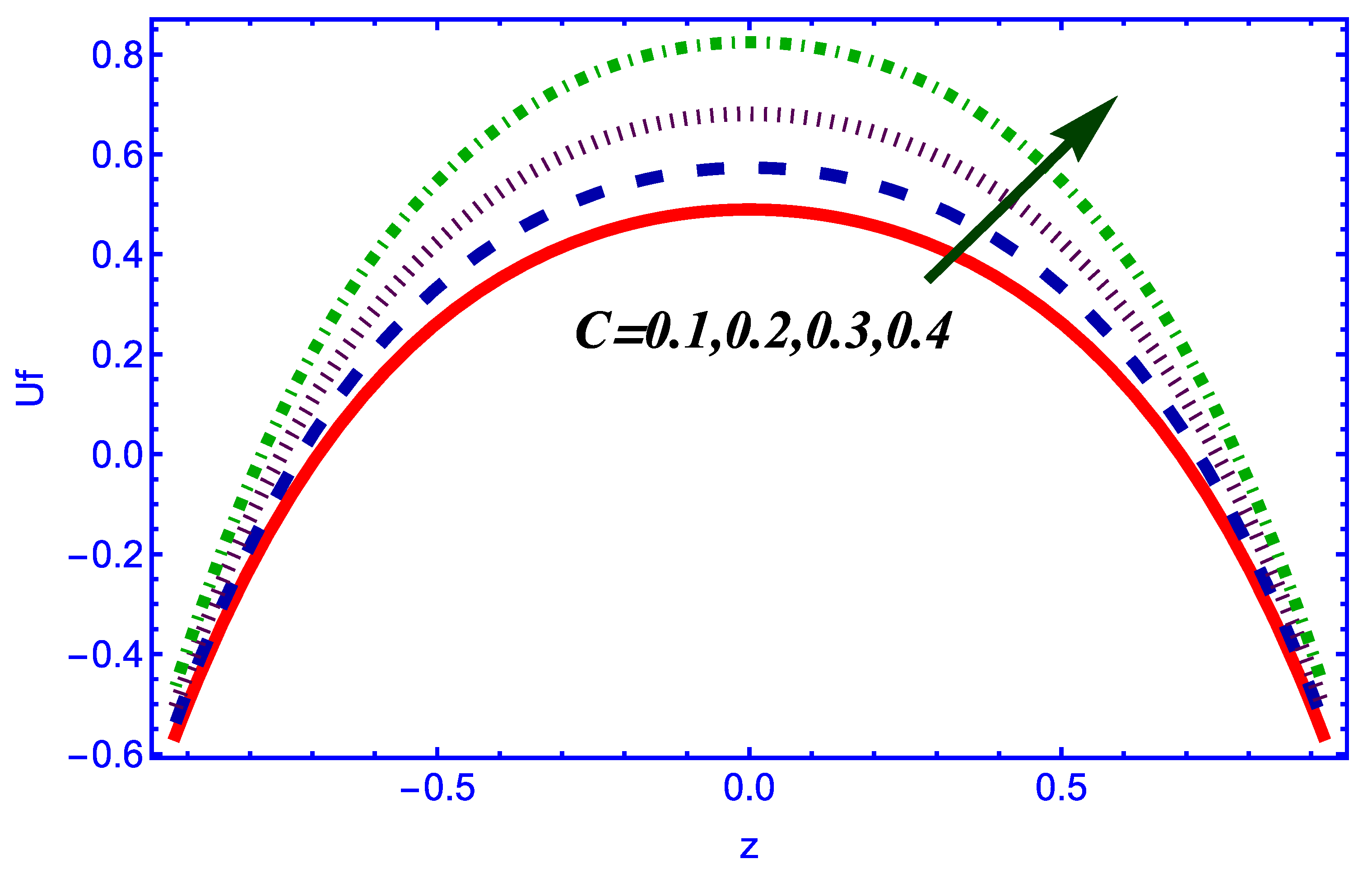
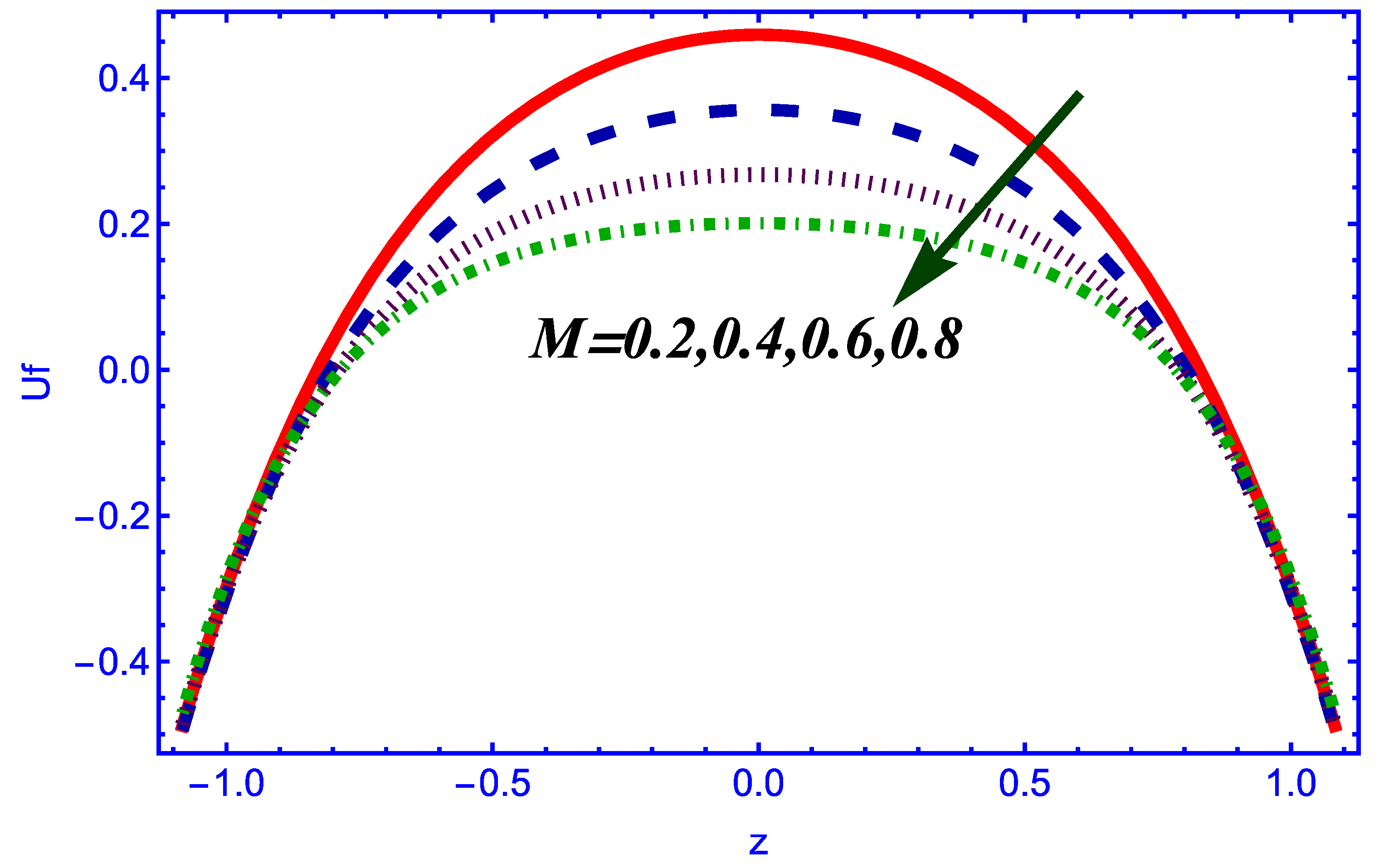
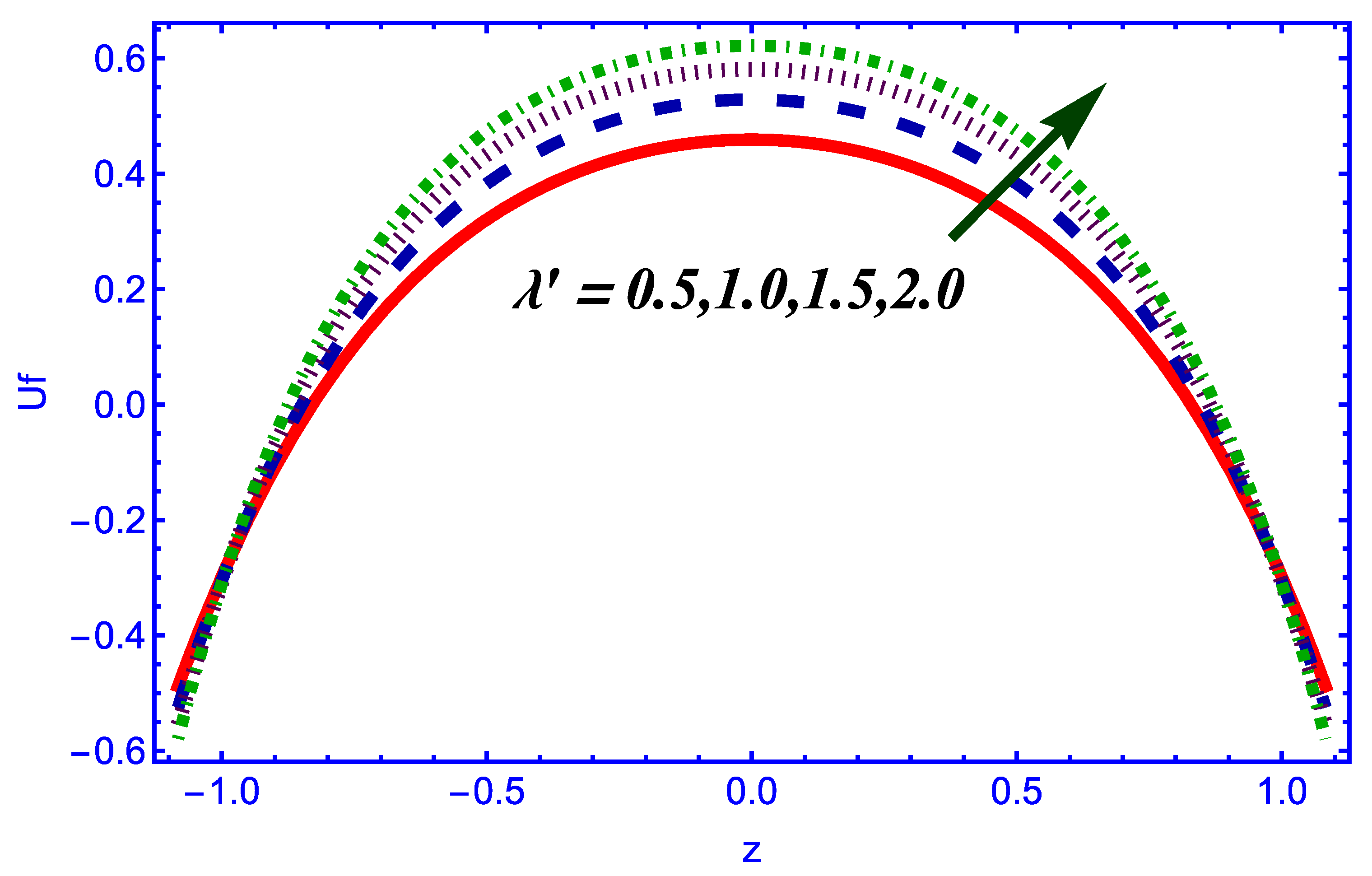
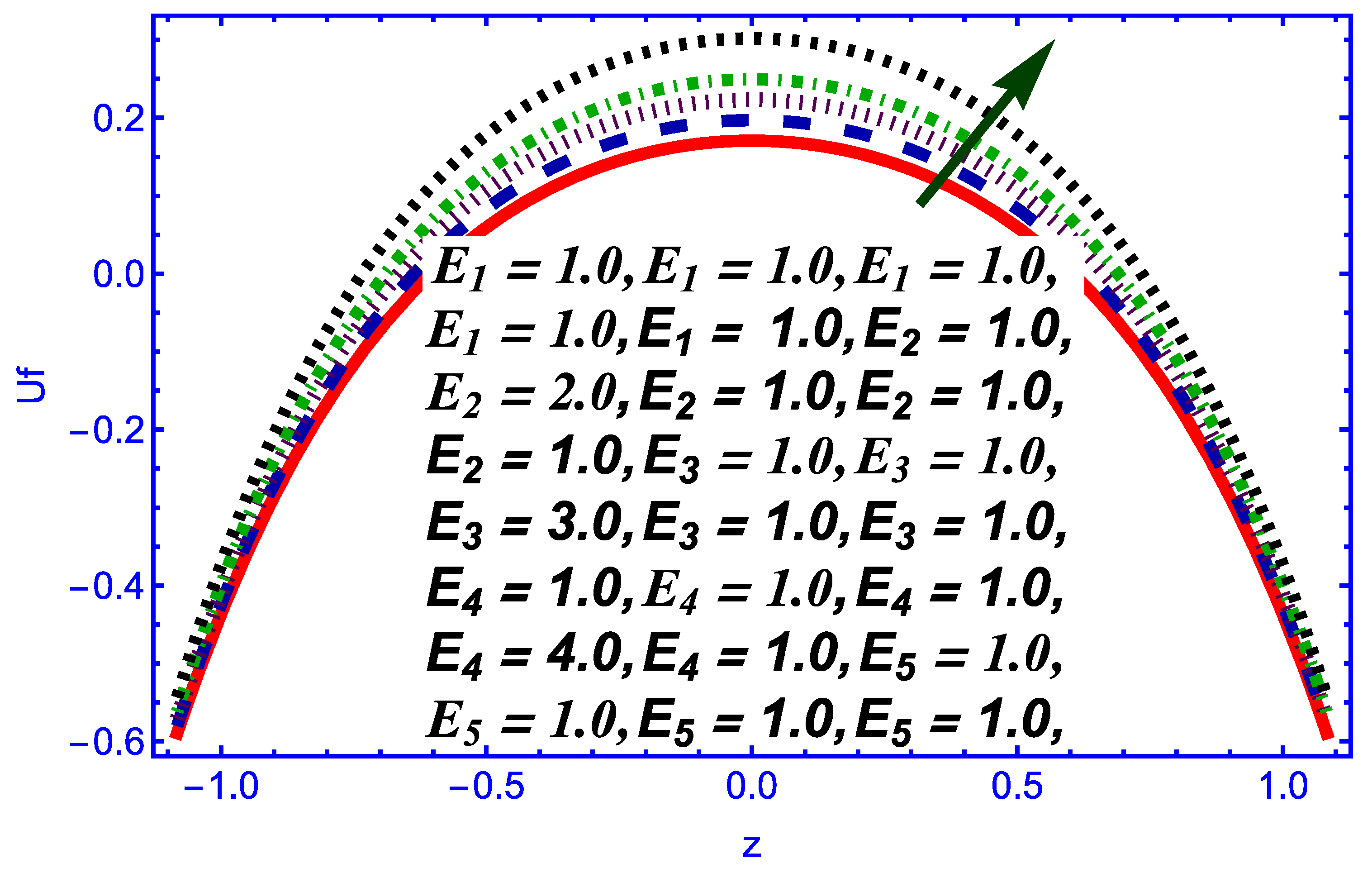
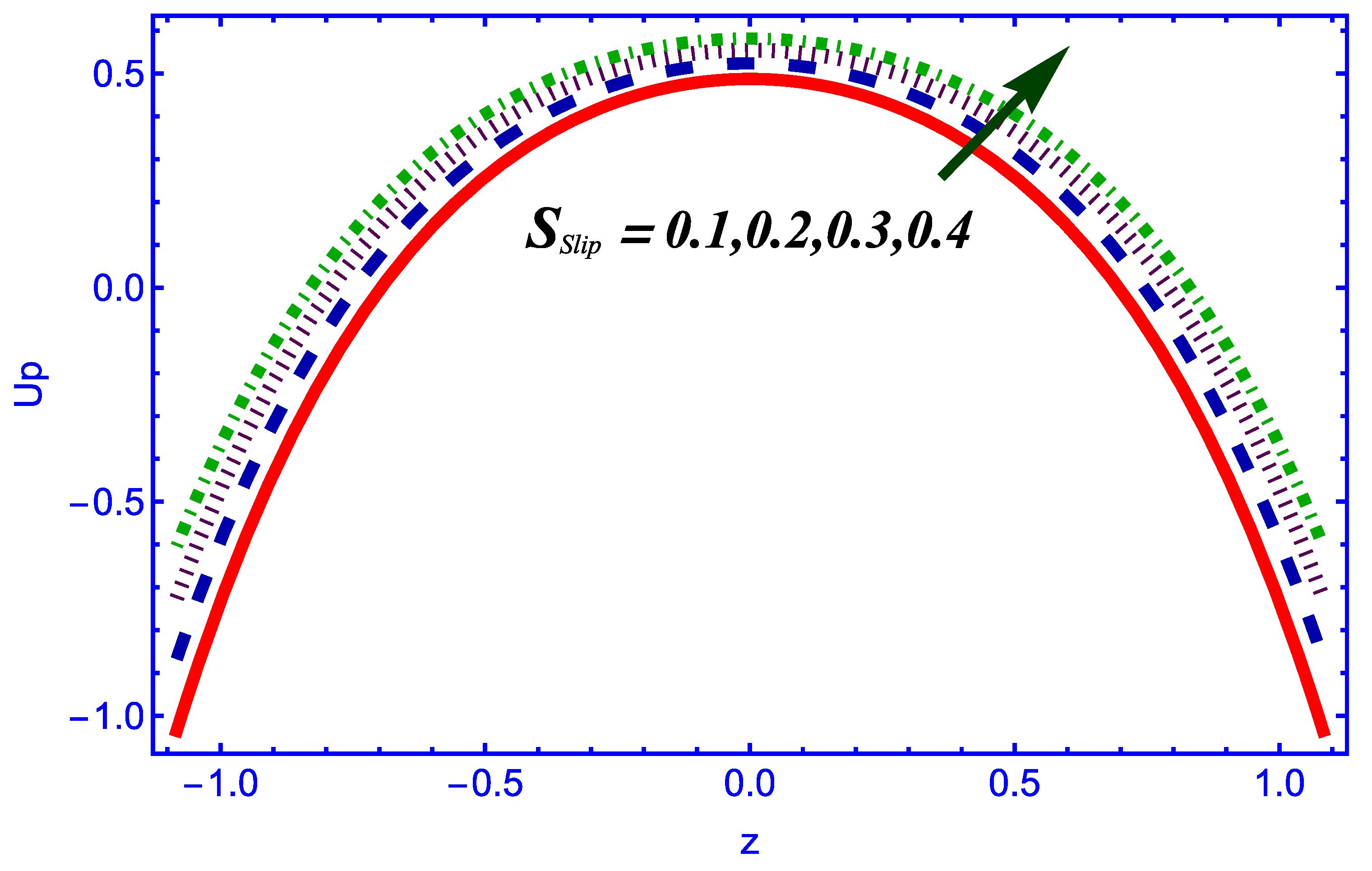
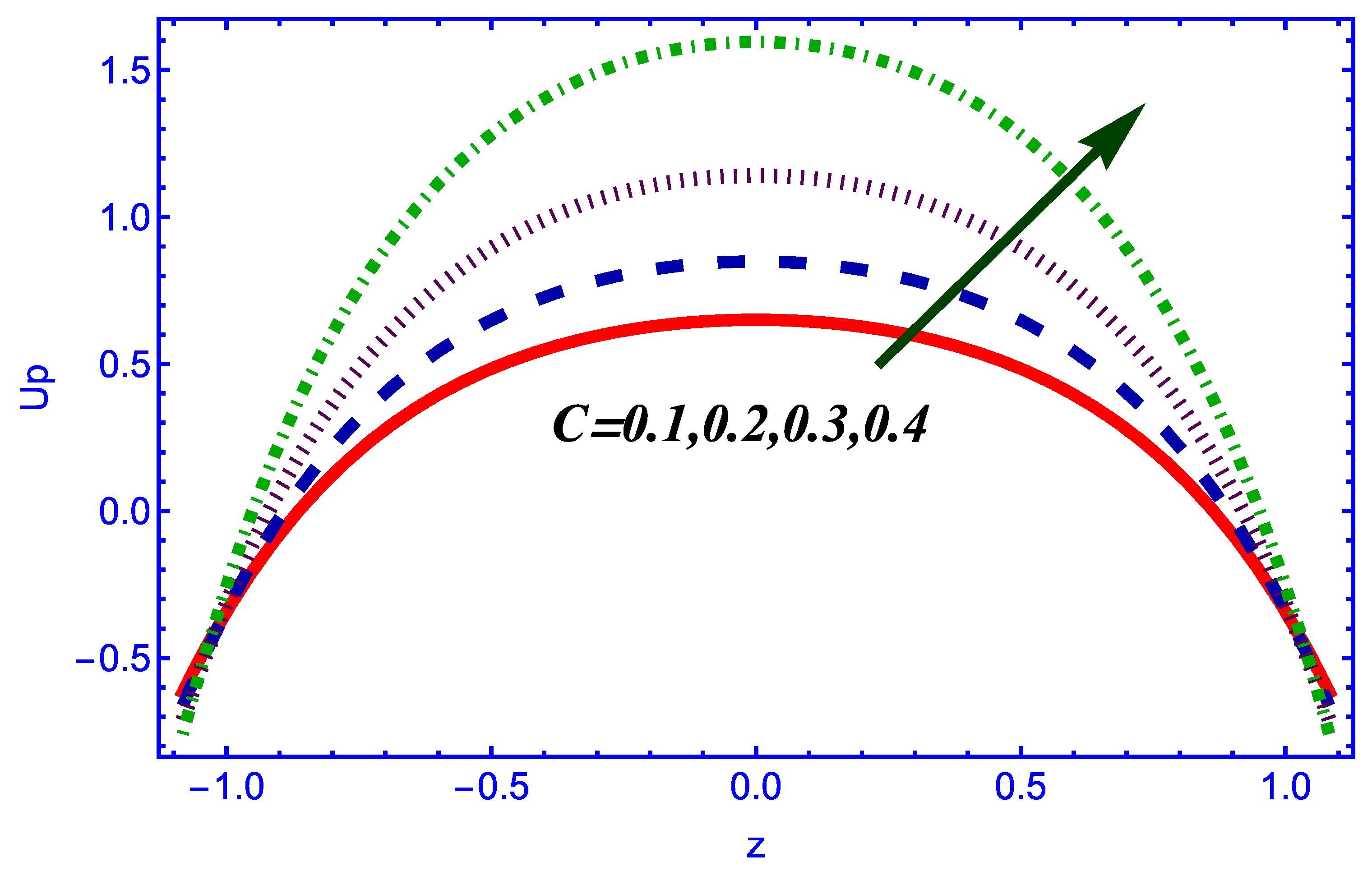
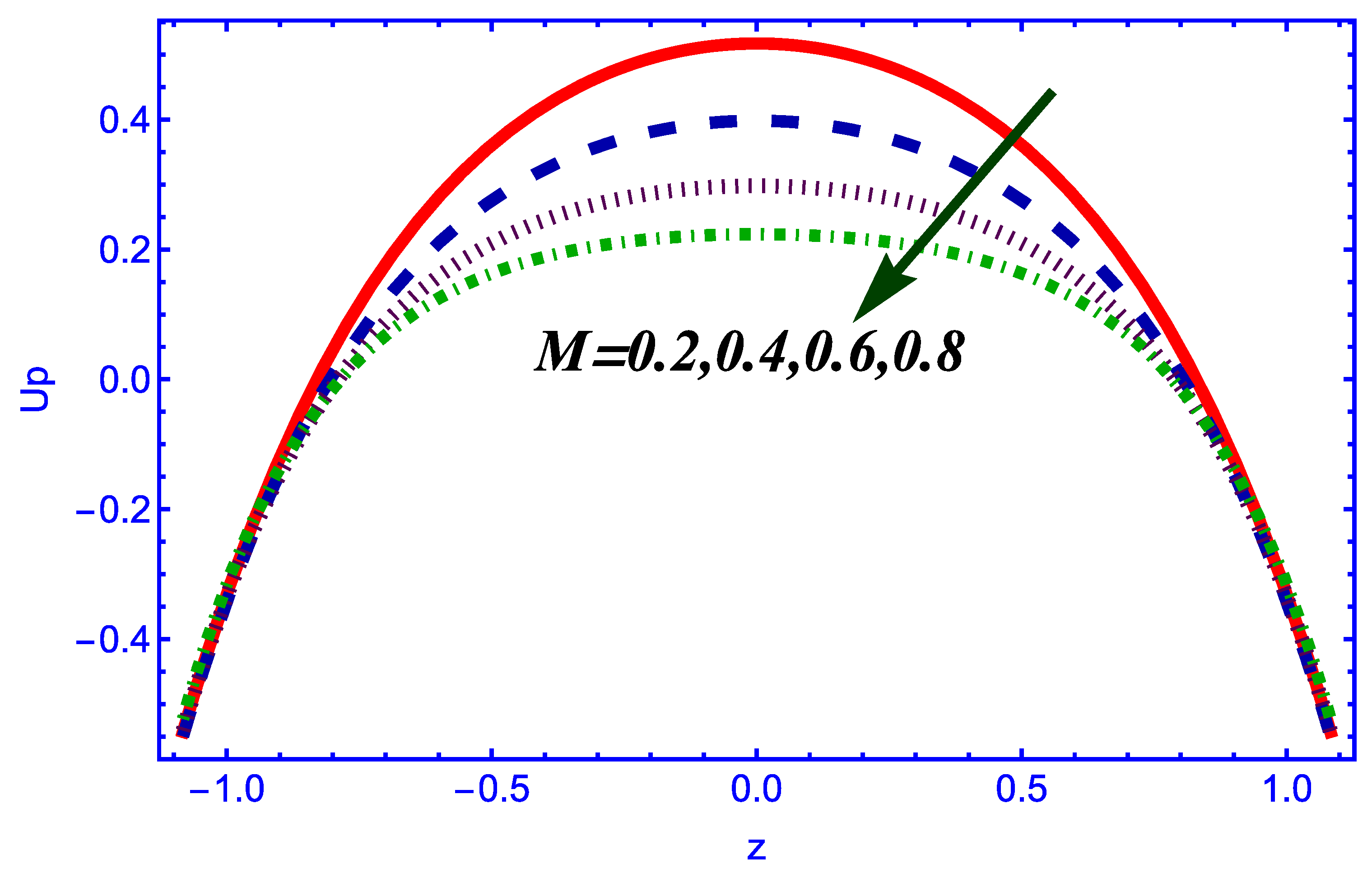
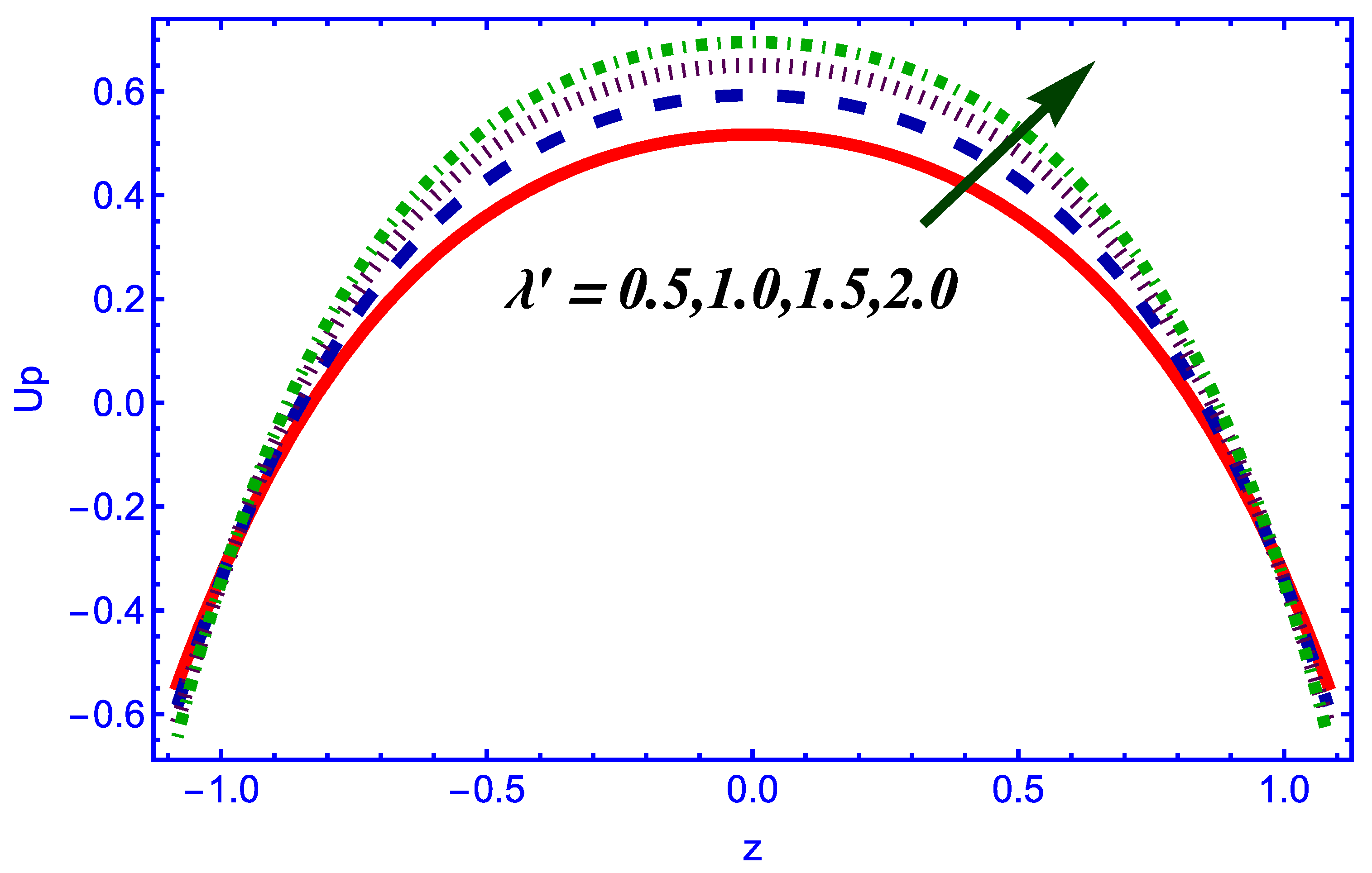

5. Streamlines
6. Conclusions
Author Contributions
Funding
Data Availability Statement
Acknowledgments
Conflicts of Interest
Nomenclature
| Velocity components | |
| Cartesian coordinate | |
| C | Volume fraction |
| Fluid phase velocity | |
| Wave amplitude | |
| Drag coefficient | |
| c | Wave velocity |
| Re | Reynold number |
| , | Hight of duct |
| Width of duct | |
| S | Drag force |
| B0 | Magnetic field |
| P | Pressure in fixed frame |
| S | Stress tensor |
| M | Hartmann number |
| E1 | Tension wall |
| E2 | Mass wall |
| E3 | Damping nature |
| E4 | Rigidity |
| E5 | Elasticity |
| Greek symbols | |
| Viscosity of the fluid | |
| Electric conductivity of the fluid | |
| Wavelength | |
| ’ | Jeffrey parameter |
| Fluid density | |
| Substantial derivatives | |
| Φ | Amplitude ratio |
| Subscripts | |
| f | Fluid phase |
| p | Particulate phase |
References
- Latham, T.W. Fluid Motions in a Peristaltic Pump. Ph.D. Thesis, Massachusetts Institute of Technology, Cambridge, MA, USA, 1966. [Google Scholar]
- Sher Akbar, N.; Wahid Butt, A.; Noor, N.F.M. Heat Transfer Analysis on Transport of Copper Nanofluids Due to Metachronal Waves of Cilia. Curr. Nanosci. 2014, 10, 807–815. [Google Scholar] [CrossRef]
- Nadeem, S.; Riaz, A.; Ellahi, R.; Akbar, N.S. Mathematical model for the peristaltic flow of Jeffrey fluid with nanoparticles phenomenon through a rectangular duct. Appl. Nanosci. 2014, 4, 613–624. [Google Scholar] [CrossRef] [Green Version]
- Ellahi, R.; Bhatti, M.M.; Vafai, K. Effects of heat and mass transfer on peristaltic flow in a non-uniform rectangular duct. Int. J. Heat Mass Transf. 2014, 71, 706–719. [Google Scholar] [CrossRef]
- Pozrikidis, C. A study of peristaltic flow. J. Fluid Mech. 1987, 180, 515–527. [Google Scholar] [CrossRef]
- Hina, S.; Mustafa, M.; Hayat, T.; Alsaedi, A. Peristaltic flow of couple-stress fluid with heat and mass transfer: An application in biomedicine. J. Mech. Med. Biol. 2015, 15, 1550042. [Google Scholar] [CrossRef]
- Maiti, S.; Misra, J.C. Peristaltic transport of a couple stress fluid: Some applications to hemodynamics. J. Mech. Med. Biol. 2012, 12, 1250048. [Google Scholar] [CrossRef] [Green Version]
- Shapiro, A.H.; Jaffrin, M.Y.; Weinberg, S.L. Peristaltic pumping with long wavelengths at low Reynolds number. J. Fluid Mech. 1969, 37, 799–825. [Google Scholar] [CrossRef]
- Hayat, T.; Wang, Y.; Hutter, K.; Asghar, S.; Siddiqui, A.M. Peristaltic transport of an Oldroyd-B fluid in a planar channel. Math. Probl. Eng. 2004, 2004, 347–376. [Google Scholar] [CrossRef] [Green Version]
- Hayat, T.; Mahomed, F.M.; Asghar, S. Peristaltic flow of magnetohydrodynamic Johnson-Segalman fluid. Nonlinear Dyn. 2005, 40, 375–385. [Google Scholar] [CrossRef]
- Mekheimer, K. Effect of the induced magnetic field on peristaltic flow of a couple stress fluid. Phys. Lett. A 2008, 372, 4271–4278. [Google Scholar] [CrossRef]
- Mekheimer, K.; Husseny, S.Z.-A.; El Lateef, A.I.A. Effect of Lateral Walls on Peristaltic Flow through an Asymmetric Rectangular Duct. Appl. Bionics Biomech. 2011, 8, 295–308. [Google Scholar] [CrossRef]
- Seadawy, A.R.; Ali, A.; Albarakati, W.A. Analytical wave solutions of the (2+ 1)-dimensional first in-tegro-differential Kadomtsev-Petviashivili hierarchy equation by using modified mathematical methods. Results Phys. 2019, 15, 102775. [Google Scholar] [CrossRef]
- Alharbi, K.A.M.; Ijaz, N.; Riaz, A.; Altaf, F.; Zeeshan, A. On multiphase wavy movements of non-Newtonian Jeffery fluid in a rotat-ing channel with MHD and compliant walls: Exact solutions. Waves Random Complex Media 2022, 1–23. [Google Scholar] [CrossRef]
- Bhatti, M.M.; Zeeshan, A.; Ijaz, N.; Ellahi, R. Heat transfer and inclined magnetic field analysis on peristaltically induced motion of small particles. J. Braz. Soc. Mech. Sci. Eng. 2017, 39, 3259–3267. [Google Scholar] [CrossRef]
- Almaleki, D. Stability of the Data-Model Fit over Increasing Levels of Factorial Invariance for Different Features of Design in Factor Analysis. Eng. Technol. Appl. Sci. Res. 2021, 11, 6849–6856. [Google Scholar] [CrossRef]
- Zeeshan, A.; Ijaz, N.; Riaz, A.; Mann, A.B.; Hobiny, A. Flow of nonspherical nanoparticles in electromagnetohydrodynamics of nanofluids through a porous medium between eccentric cylinders. J. Porous Media 2020, 23, 1201–1212. [Google Scholar] [CrossRef]
- Ahmed, I.; Seadawy, A.R.; Lu, D. Kinky breathers, W-shaped and multi-peak solitons interaction in (2 + 1)-dimensional nonlinear Schrödinger equation with Kerr law of nonlinearity. Eur. Phys. J. Plus 2019, 134, 120. [Google Scholar] [CrossRef]
- Zeeshan, A.; Bhatti, M.M.; Ijaz, N.; Beg, O.A.; Kadir, A. Biologically inspired transport of solid spherical nanoparticles in an electri-cally conducting viscoelastic fluid with heat transfer. Therm. Sci. 2020, 24, 1251–1260. [Google Scholar] [CrossRef] [Green Version]
- Reddy, M.G.; Makinde, O.D. Magnetohydrodynamic Peristaltic Transport of Jeffrey Nanofluid in an Asymmetric Channel. J. Mol. Liq. 2016, 223, 1242–1248. [Google Scholar] [CrossRef]
- Almaleki, D.A. Accuracy of Data-Model Fit Using Growing Levels of Invariance Models. Int. J. Comput. Sci. Netw. Secur. 2021, 21, 157–164. [Google Scholar]
- Ijaz, N.; Zeeshan, A.; Rehman, S.U. Effect of electro-osmosis and mixed convection on nano-bio-fluid with non-spherical particles in a curved channel. Mech. Ind. 2018, 19, 108. [Google Scholar] [CrossRef]
- Srivastava, V.; Saxena, M. Two-layered model of Casson fluid flow through stenotic blood vessels: Applications to the cardiovascular system. J. Biomech. 1994, 27, 921–928. [Google Scholar] [CrossRef]
- Srivastava, V. Particle-fluid suspension model of blood flow through stenotic vessels with applications. Int. J. Bio-Med. Comput. 1995, 38, 141–154. [Google Scholar] [CrossRef]
- Srivastava, V.P.; Saxena, M. A two-fluid model of non-Newtonian blood flow induced by peristaltic waves. Rheol. Acta 1995, 34, 406–414. [Google Scholar] [CrossRef]
- Ali, S.S.; Kaur, R. Exploring the Impact of Technology 4.0 Driven Practice on Warehousing Performance: A Hybrid Approach. Mathematics 2022, 10, 1252. [Google Scholar] [CrossRef]
- Zeeshan, A.; Ijaz, N.; Majeed, A. Analysis of magnetohydrodynamics peristaltic transport of hydrogen bubble in water. Int. J. Hydrog. Energy 2018, 43, 979–985. [Google Scholar] [CrossRef]
- Ali, S.S.; Kaur, R. Effectiveness of corporate social responsibility (CSR) in implementation of social sustainability in warehousing of developing countries: A hybrid approach. J. Clean. Prod. 2021, 324, 129154. [Google Scholar] [CrossRef]
- Mahmoud, S.R.; Afifi, N.A.S.; Al-Isede, H.M. Effect of porous medium and magnetic field on peristaltic transport of a Jeffrey fluid. Int. J. Math. Anal. 2011, 5, 1025–1034. [Google Scholar]
- Khan, S.; Ali, S.S.; Singh, R. Determinants of Remanufacturing Adoption for Circular Economy: A Causal Relationship Evaluation Framework. Appl. Syst. Innov. 2022, 5, 62. [Google Scholar] [CrossRef]
- Mekheimer, K.; Salem, A.; Zaher, A. Peristatcally induced MHD slip flow in a porous medium due to a surface acoustic wavy wall. J. Egypt. Math. Soc. 2014, 22, 143–151. [Google Scholar] [CrossRef] [Green Version]
- Ijaz, N.; Zeeshan, A.; Riaz, A.; Alhodaly, M.S. Transport of drugs using complex peristaltic waves in a biological system. Waves Random Complex Media 2022, 1–16. [Google Scholar] [CrossRef]
- Seadawy, A.R.; Lu, D.; Iqbal, M. Application of mathematical methods on the system of dynamical equations for the ion sound and Langmuir waves. Pramana 2019, 93, 10. [Google Scholar] [CrossRef]
- Zeeshan, A.; Ijaz, N.; Bhatti, M.M. Flow analysis of particulate suspension on an asymmetric peristaltic motion in a curved con-figuration with heat and mass transfer. Mech. Ind. 2018, 19, 401. [Google Scholar] [CrossRef] [Green Version]
- Almaleki, D.A.; Alomrany, A.G. The Effect of Methods of Estimating the Ability on The Accuracy and Items Parameters According to 3PL Model. Int. J. Comput. Sci. Netw. Secur. 2021, 21, 93–102. [Google Scholar]
- Ijaz, N.; Zeeshan, A.; Bhatti, M. Peristaltic propulsion of particulate non-Newtonian Ree-Eyring fluid in a duct through constant magnetic field. Alex. Eng. J. 2018, 57, 1055–1060. [Google Scholar] [CrossRef]
- Nadeem, S.; Akram, S. Pristaltic flow of a Jeffrey fluid in a rectangular duct. Nonlinear Anal. Real World Appl. 2010, 11, 4238–4247. [Google Scholar] [CrossRef]
- Almaleki, D. Examinee characteristics and their impact on the psychometric properties of a multiple-choice test ac-cording to the item response theory (IRT). Eng. Technol. Appl. Sci. Res. 2021, 11, 6889–6901. [Google Scholar] [CrossRef]
- Zeeshan, A.; Ijaz, N.; Bhatti, M.M.; Mann, A. Mathematical study of peristaltic propulsion of solid–liquid multiphase flow with a biorheological fluid as the base fluid in a duct. Chin. J. Phys. 2017, 55, 1596–1604. [Google Scholar] [CrossRef]
- Akram, S.; Athar, M.; Saeed, K.; Umair, M.Y. Nanomaterials effects on induced magnetic field and dou-ble-diffusivity convection on peristaltic transport of Prandtl nanofluids in inclined asymmetric channel. Nanomater. Nanotechnol. 2022, 12, 18479804211048630. [Google Scholar] [CrossRef]
- Kothandapani, M.; Srinivas, S. Peristaltic transport of a Jeffrey fluid under the effectof magnetic field in an asymmetric channel. Int. J. Non-Linear Mech. 2008, 43, 915. [Google Scholar] [CrossRef]
- Hayat, T.; Javed, M.; Ali, N. MHD peristaltic transport of a Jeffery fluid in a channel with complaint walls and porous space. Transp. Porous Media 2008, 74, 259–274. [Google Scholar] [CrossRef]
- Ellahi, R.; Hussain, F. Simultaneous effects of MHD and partial slip on peristaltic flow of Jeffery fluid in a rectangular duct. J. Magn. Magn. Mater. 2015, 393, 284–292. [Google Scholar] [CrossRef]
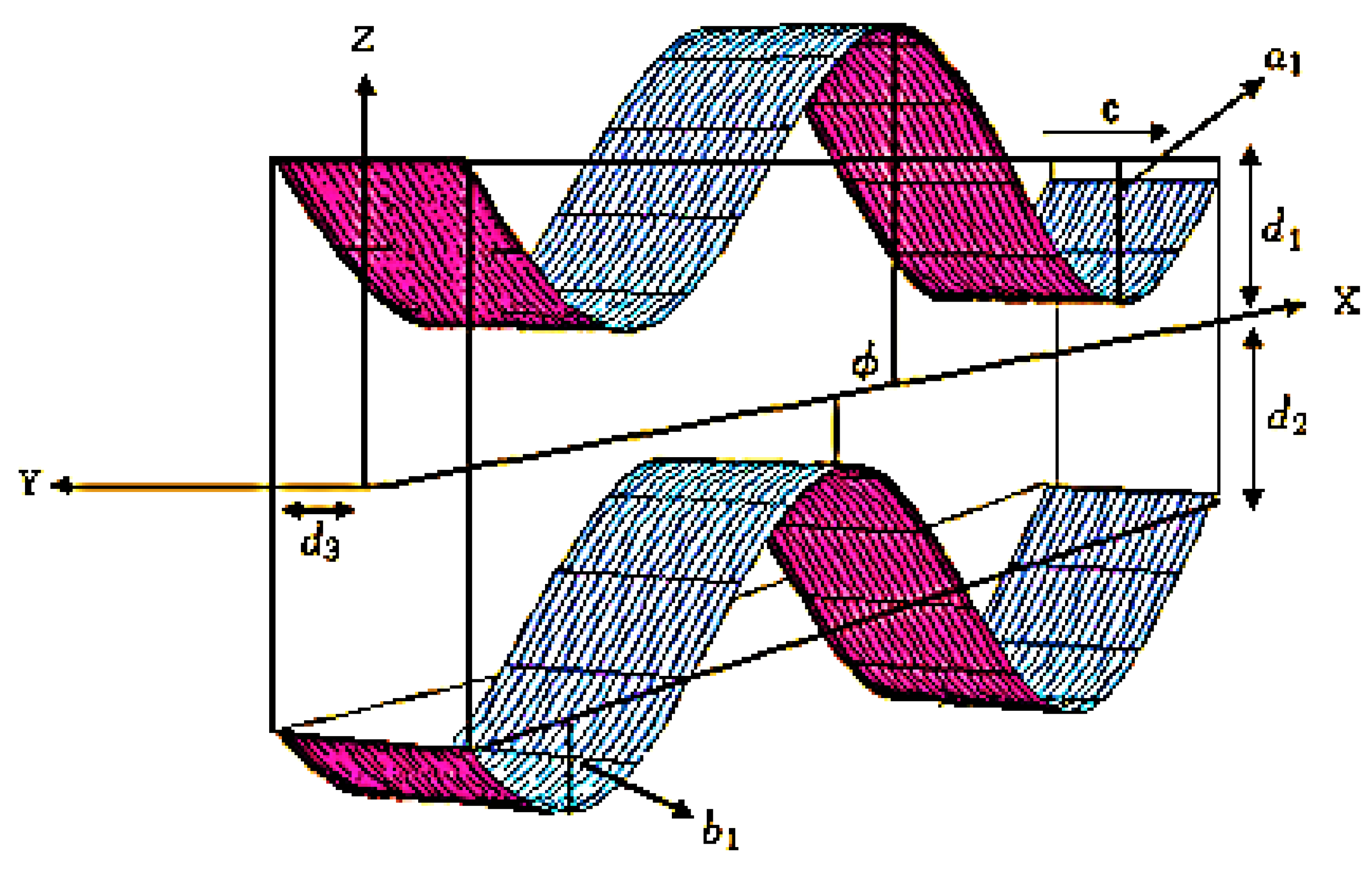
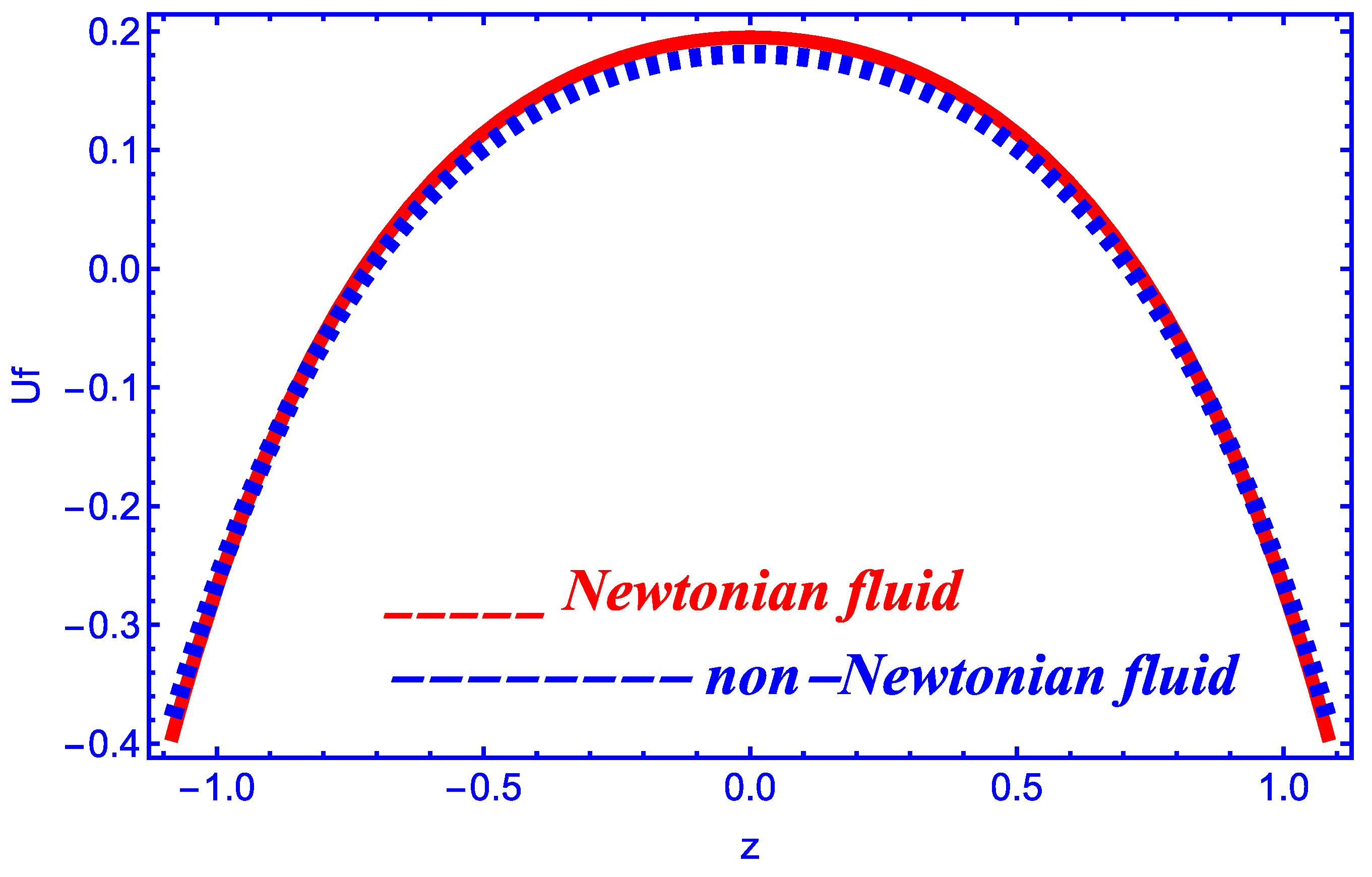

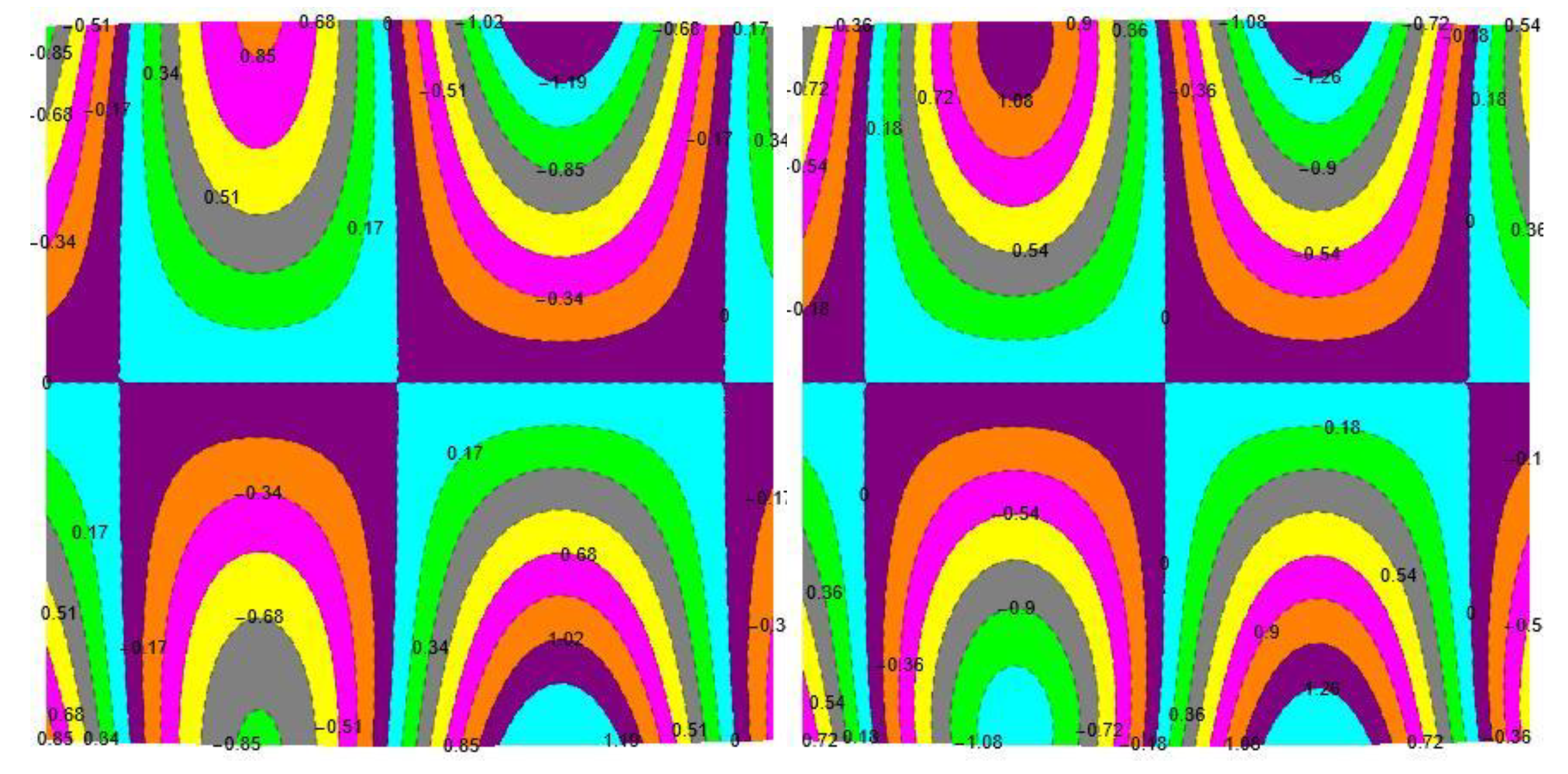
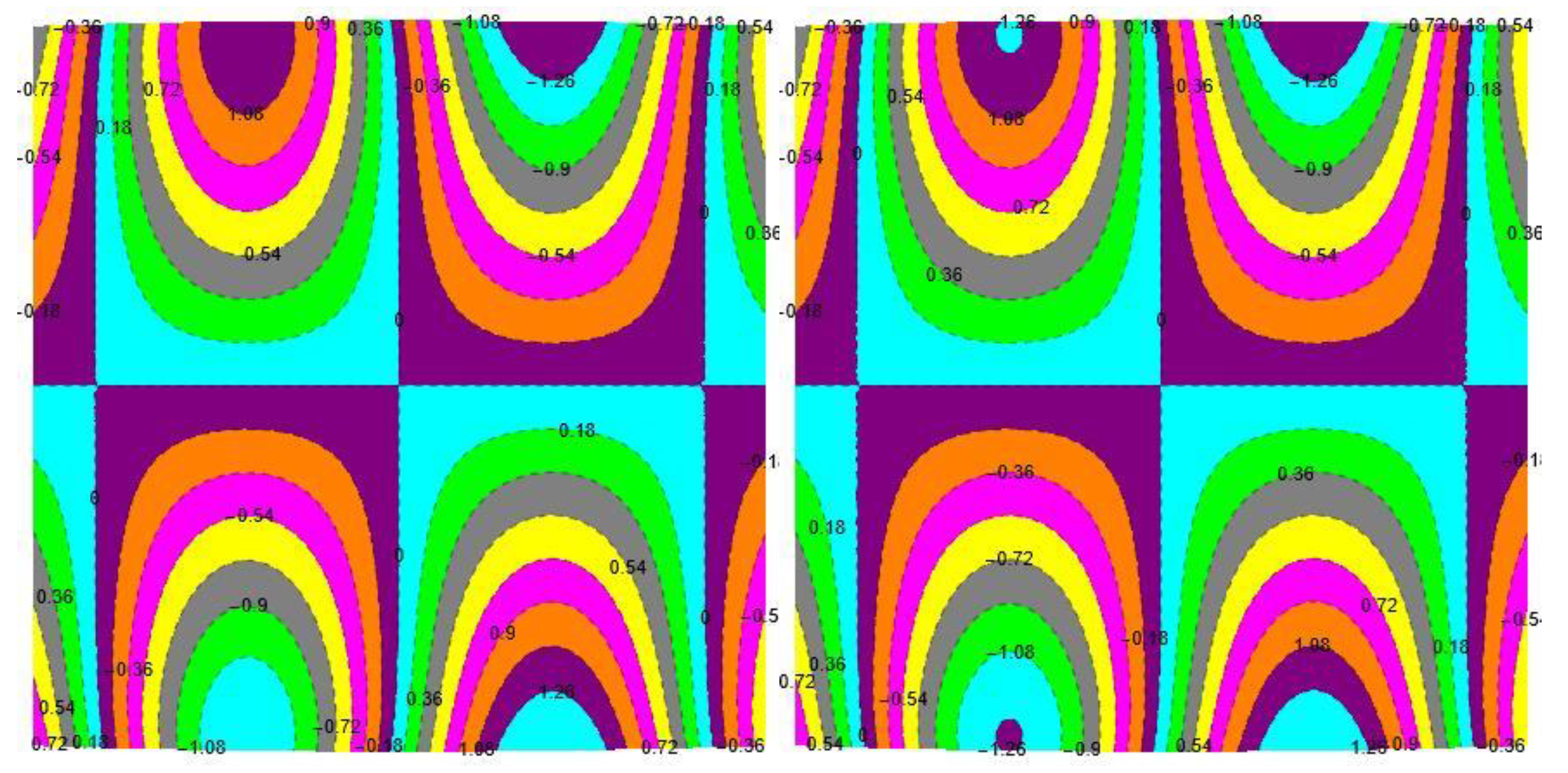



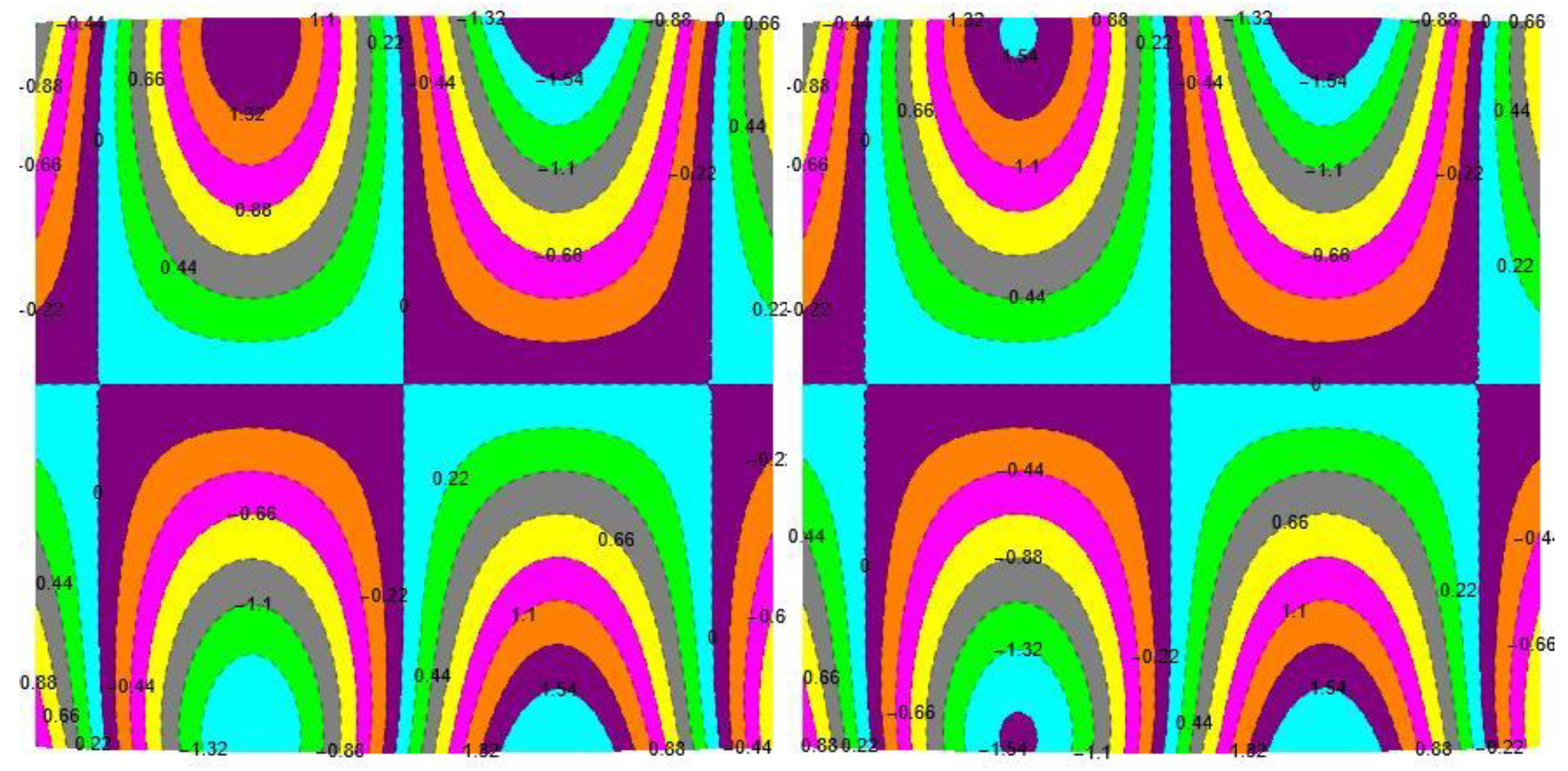

Publisher’s Note: MDPI stays neutral with regard to jurisdictional claims in published maps and institutional affiliations. |
© 2022 by the authors. Licensee MDPI, Basel, Switzerland. This article is an open access article distributed under the terms and conditions of the Creative Commons Attribution (CC BY) license (https://creativecommons.org/licenses/by/4.0/).
Share and Cite
Fatima, N.; Ijaz, N.; Riaz, A.; Tag El-Din, E.M.; Ali, S.S. Evaluate Asymmetric Peristaltic Pumping Drug Carrying Image in Biological System: Measure Multiphase Flows in Biomedical Applications. Symmetry 2022, 14, 2437. https://doi.org/10.3390/sym14112437
Fatima N, Ijaz N, Riaz A, Tag El-Din EM, Ali SS. Evaluate Asymmetric Peristaltic Pumping Drug Carrying Image in Biological System: Measure Multiphase Flows in Biomedical Applications. Symmetry. 2022; 14(11):2437. https://doi.org/10.3390/sym14112437
Chicago/Turabian StyleFatima, Nahid, Nouman Ijaz, Arshad Riaz, ElSayed M. Tag El-Din, and Sadia Samar Ali. 2022. "Evaluate Asymmetric Peristaltic Pumping Drug Carrying Image in Biological System: Measure Multiphase Flows in Biomedical Applications" Symmetry 14, no. 11: 2437. https://doi.org/10.3390/sym14112437




